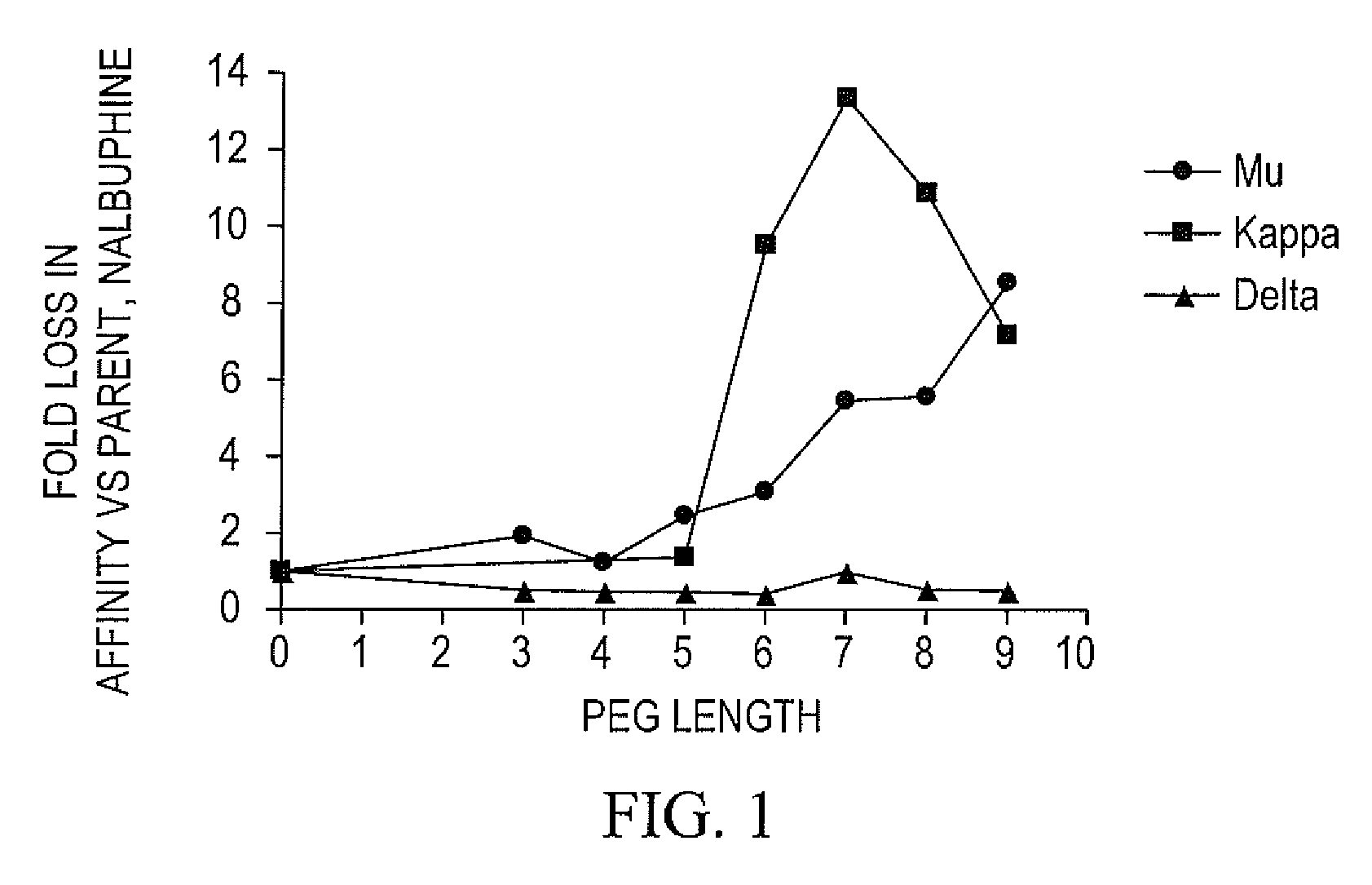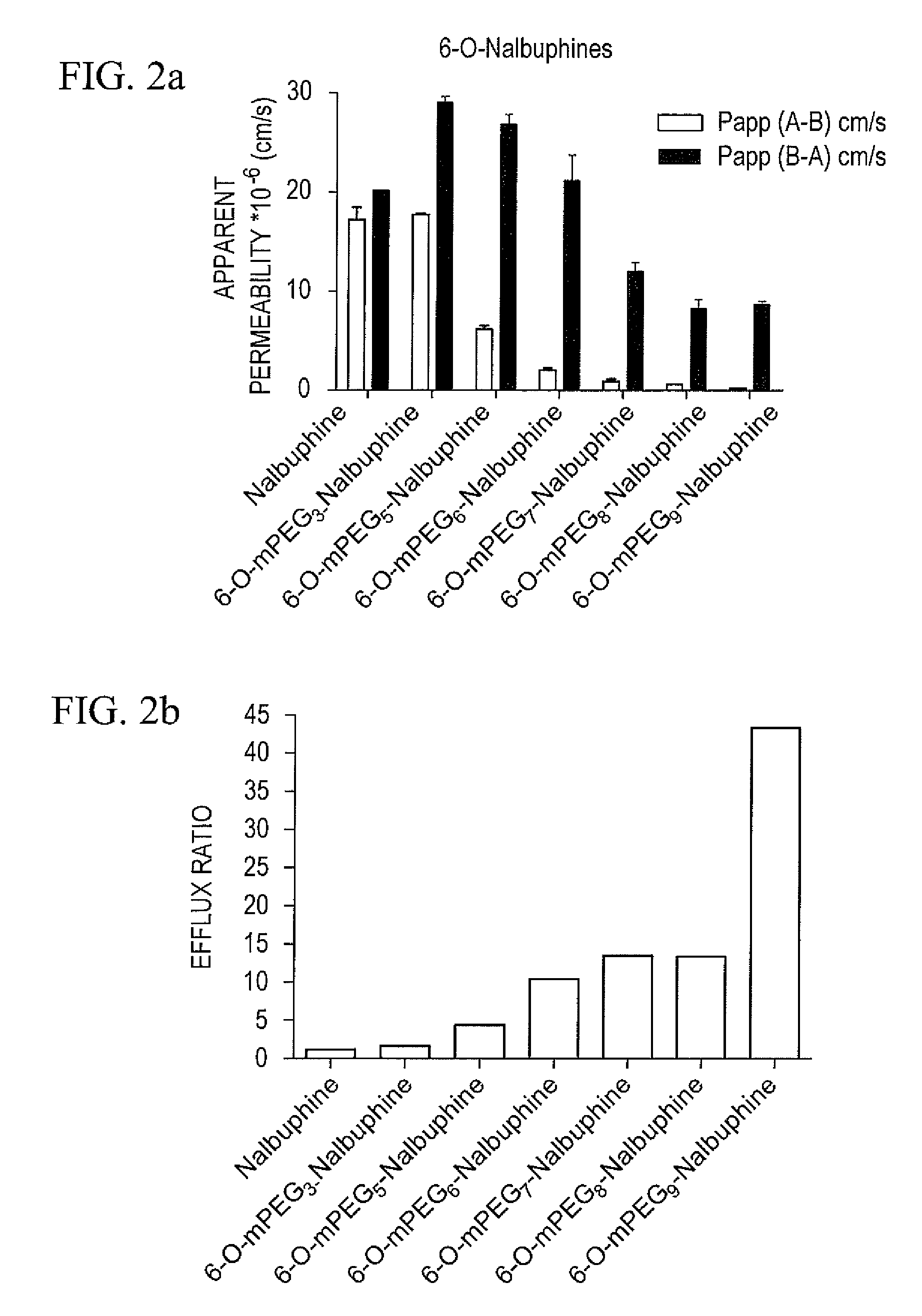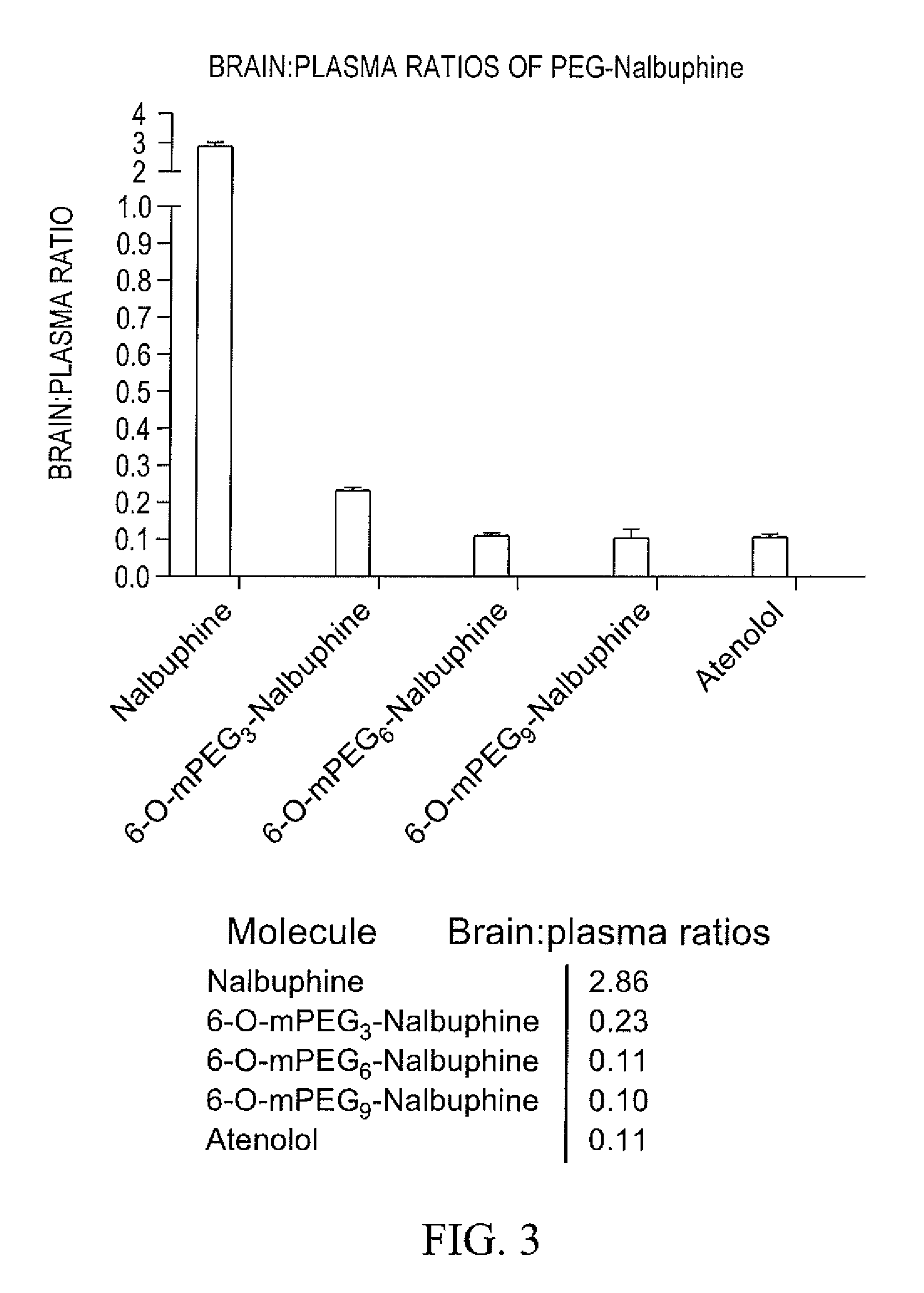Oligomer-opioid agonist conjugates
a technology of agonists and conjugates, applied in the field of chemically modified opioid agonists, can solve the problems of significant first-pass metabolism of opioid agonists, and the association of opioid agonists with abuse potential
- Summary
- Abstract
- Description
- Claims
- Application Information
AI Technical Summary
Benefits of technology
Problems solved by technology
Method used
Image
Examples
example 1
Preparation of an Oligomer-Nalbuphine Conjugates—“Approach A”
[0246]PEG-Nalbuphine was prepared using a first approach. Schematically, the approach followed for this example is shown below.
[0247]
[0248]Desalting of Nalbuphine Hydrochloride Dihydrate:
[0249]Nalbuphine hydrochloride dihydrate (600 mg, from Sigma) was dissolved in water (100 mL). Saturated aqueous K2CO3 was added and then adjusted the pH to 9.3 with 1 N HCl solution, saturated with sodium chloride. The solution was extracted with dichloromethane (5×25 mL). The combined organic solution was washed with brine (100 mL), dried over Na2SO4, concentrated to dryness and dried under high vacuum to yield nalbuphine (483.4 mg, 97% recovery). The product was confirmed by 1H-NMR in CDCl3.
Synthesis of 3-O-mPEG3-Nalbuphine (2) (n=3)
[0250]
[0251]Nalbuphine (28.5 mg, 0.08 mmol) was dissolved in a mixture of acetone (2 mL) and toluene (1.5 mL). Potassium carbonate (21 mg, 0.15 mmol) was added, followed by an addition of mPEG3-Br (44.5 mg, ...
example 2
Preparation of an Oligomer-Nalbuphine Conjugates—“Approach B”
[0261]PEG-Nalbuphine was prepared using a second approach. Schematically, the approach followed for this example is shown below.
[0262]
Synthesis of 3-O-MEM-Nalbuphine (3)
[0263]
[0264]Nalbuphine (321.9 mg, 0.9 mmol) was dissolved in acetone / toluene (19 mL / 8 mL). Then potassium carbonate (338 mg, 2.45 mmol) was added, followed by an addition of MEMCl (160 μL, 1.41 mmol). The resulting mixture was stirred at room temperature for 21 hours MeOH (0.3 mL) was added to quench the reaction. The reaction mixture was concentrated under reduced pressure to dryness. The residue was mixed with water (5 mL) and brine (15 mL), extracted with dicliloromethane (3×15 mL). The combined organic solution was washed with brine, dried over Na2SO4, concentrated. The residue was separated by Biotage automatic flash column chromatography with 2-10% MeOH in dichloromethane to result in the product 3-O-MEM-nalbuphine (3) (341 mg) and the starting materi...
example 3
Preparation of an Oligomer-Nalbuphine Conjugates—“Approach C”
[0293]PEG-Nalbuphine was prepared using a third approach. Schematically, the approach followed for this example is shown below.
[0294]
Synthesis of TrO-PEG5-OH (7) (n=5)
[0295]
[0296]PEG5-di-OH (6) (n=5) (5.88 g, 24.19 mmol) was dissolved in toluene (30 mL), and concentrated to remove toluene under reduced pressure. The residue was dried under high vacuum. Anhydrous DMF (40 mL) was added, followed by an addition of DMAP (0.91 g, 7.29 mmol) and TrCl (trityl chloride) (1.66 g, 5.84 mmol). The resulting mixture was heated at 50° C. for 22 hours. The reaction was concentrated to remove the solvents (high vacuum, 50° C.). The residue was mixed with water, and extracted with EtOAc (3×25 mL). The combined organic solution was washed with brine, dried over Na2CO3, concentrated. The residue was purified with flash column chromatography on silica gel to result in 1.29 g of product in 46% yield. The product was confirmed with 1H-NMR in C...
PUM
| Property | Measurement | Unit |
|---|---|---|
| polydispersity index | aaaaa | aaaaa |
| molecular weight | aaaaa | aaaaa |
| molecular weight | aaaaa | aaaaa |
Abstract
Description
Claims
Application Information
 Login to View More
Login to View More - R&D
- Intellectual Property
- Life Sciences
- Materials
- Tech Scout
- Unparalleled Data Quality
- Higher Quality Content
- 60% Fewer Hallucinations
Browse by: Latest US Patents, China's latest patents, Technical Efficacy Thesaurus, Application Domain, Technology Topic, Popular Technical Reports.
© 2025 PatSnap. All rights reserved.Legal|Privacy policy|Modern Slavery Act Transparency Statement|Sitemap|About US| Contact US: help@patsnap.com



